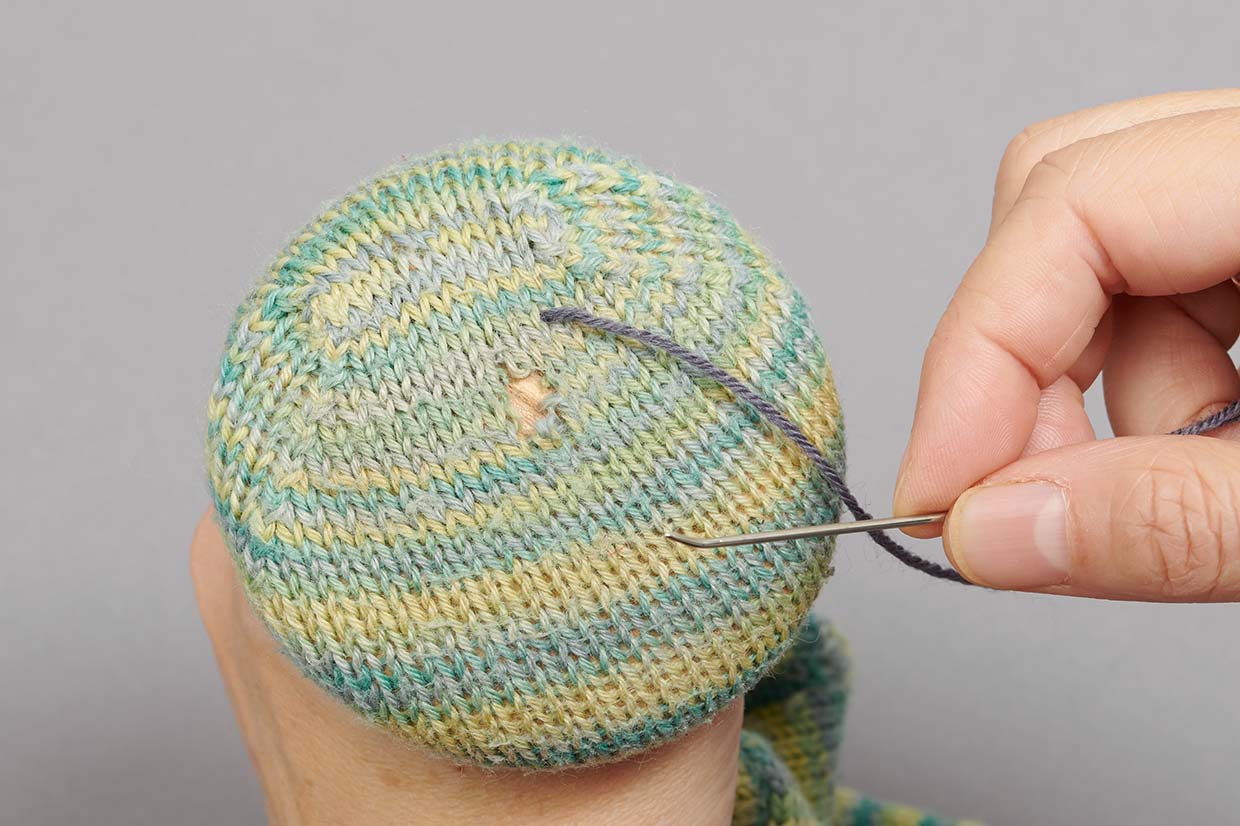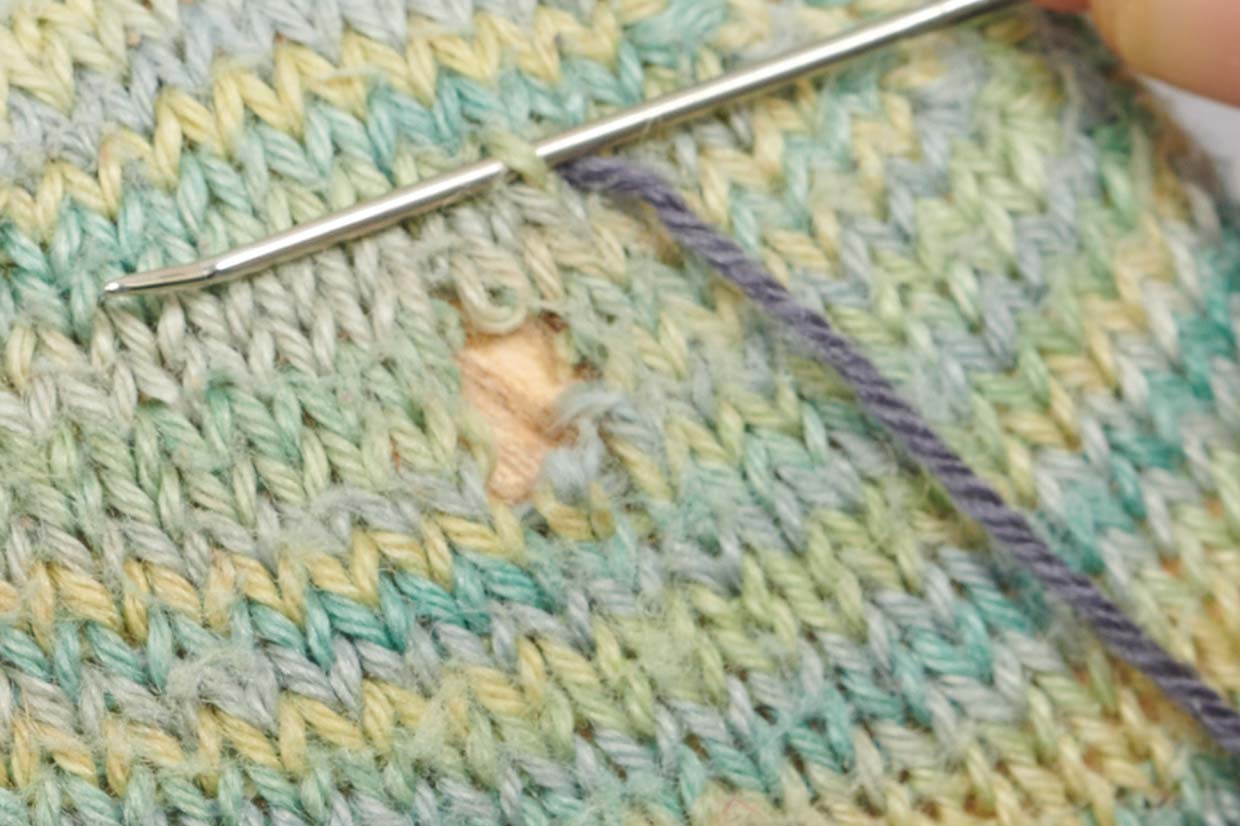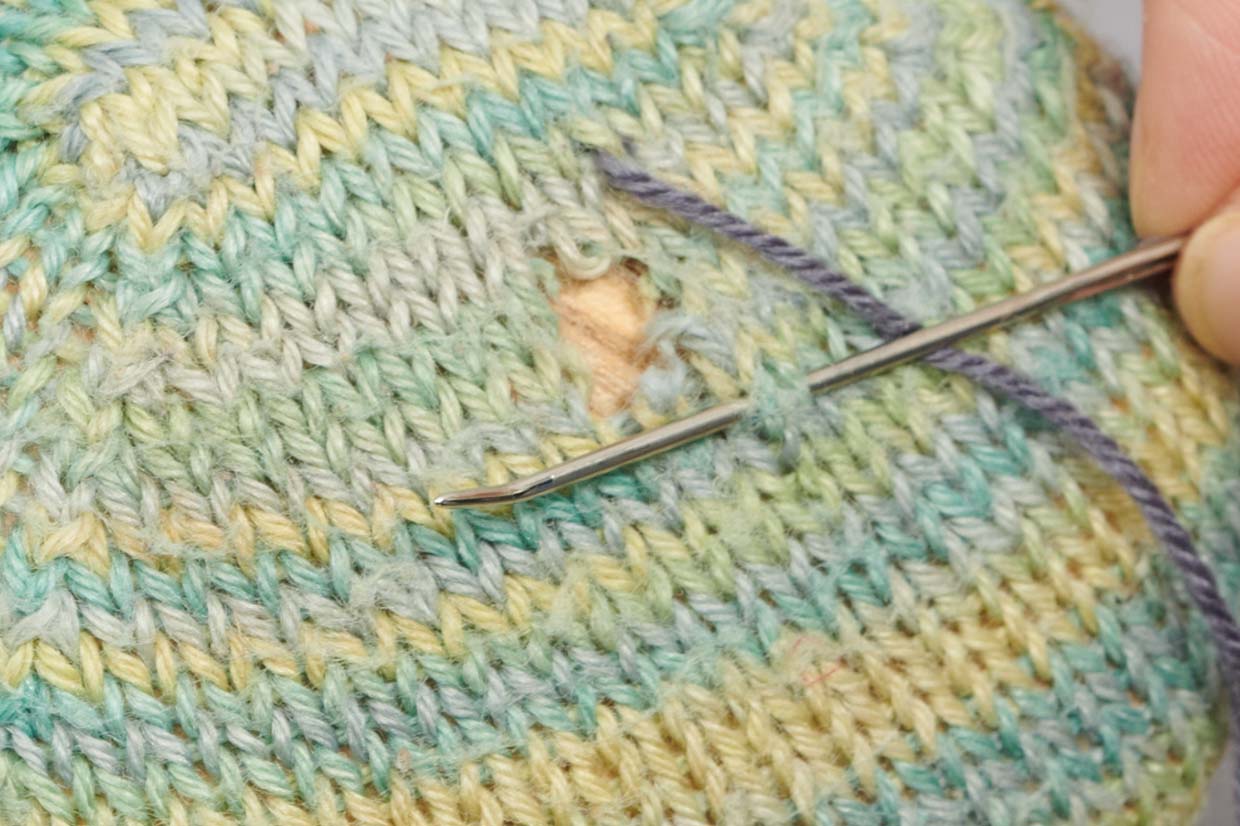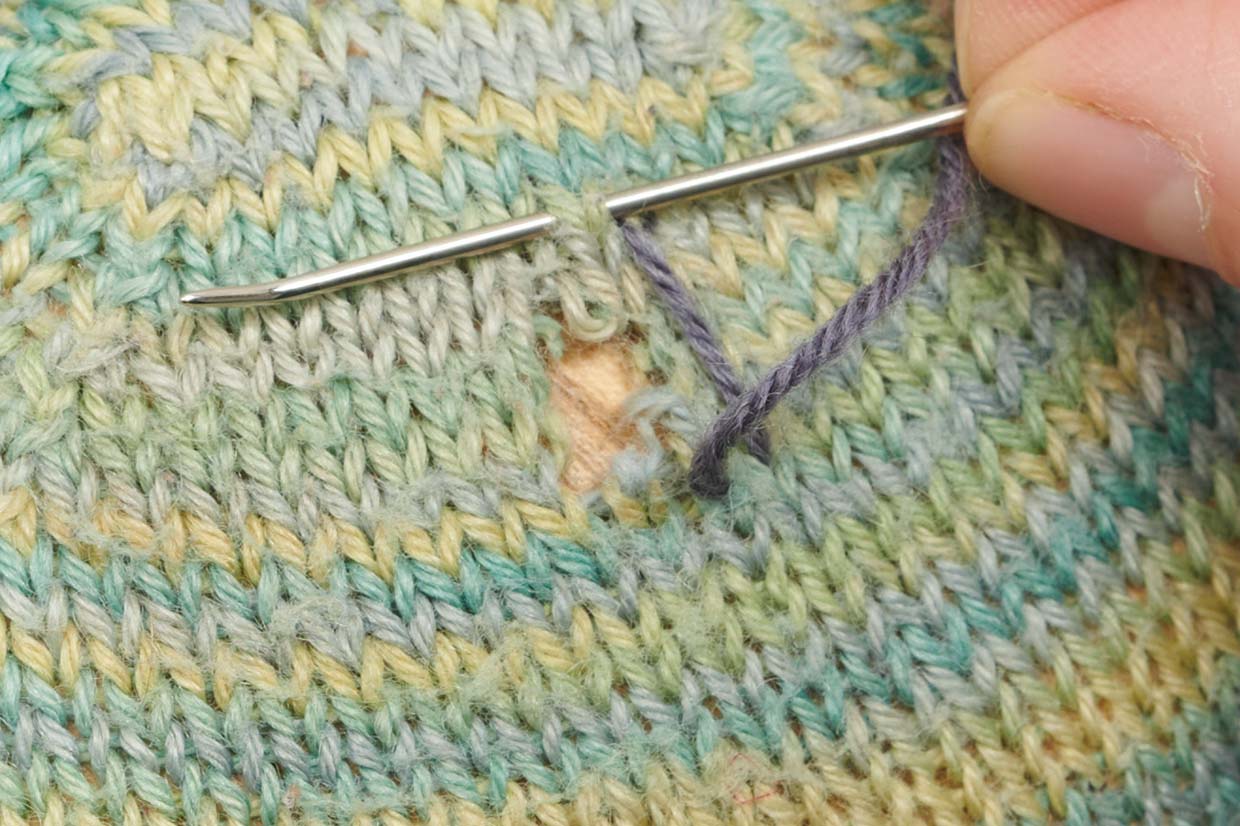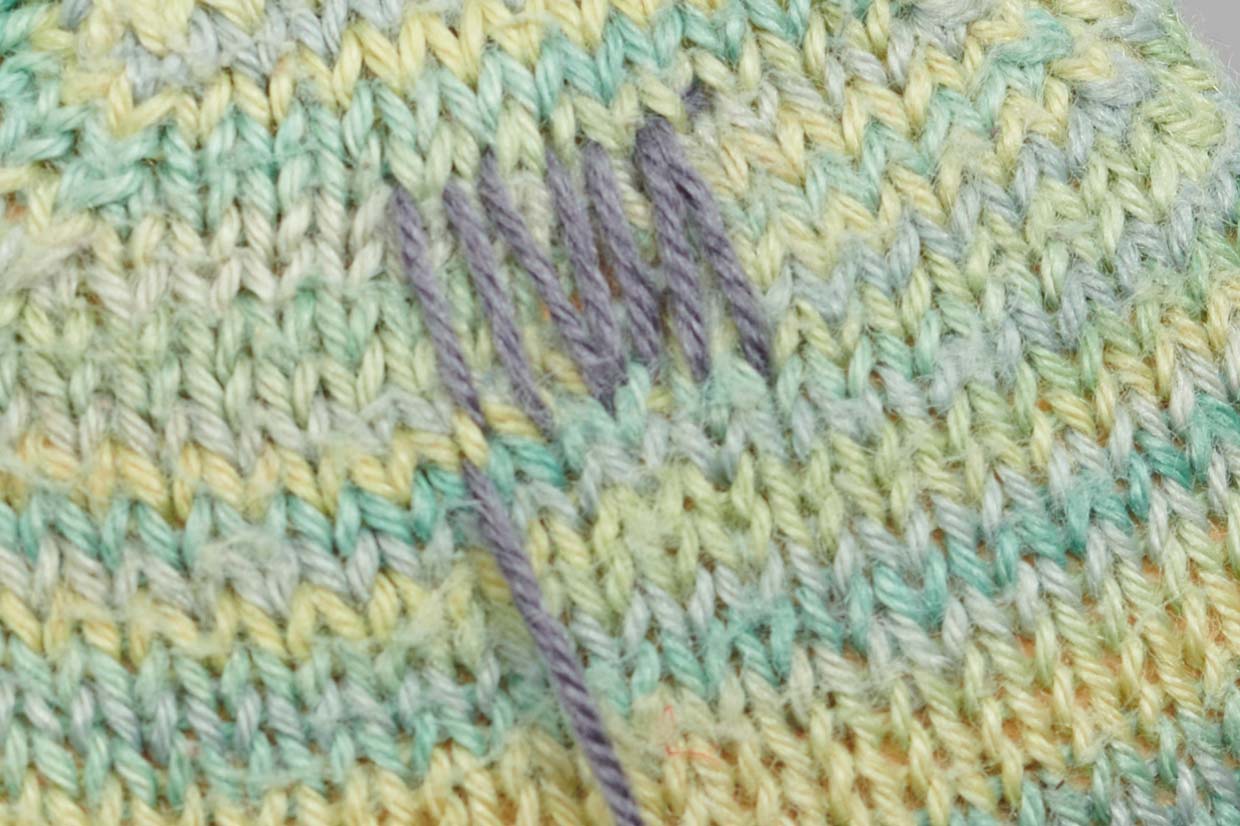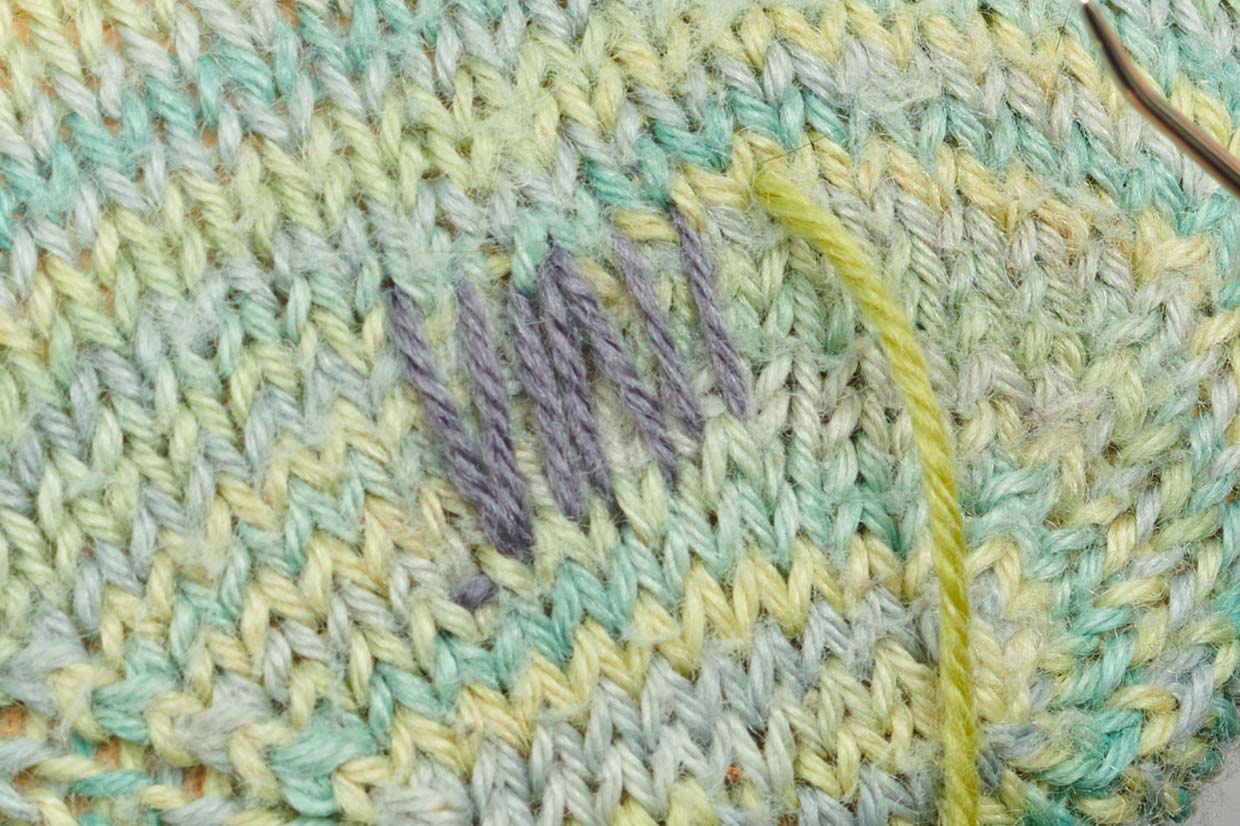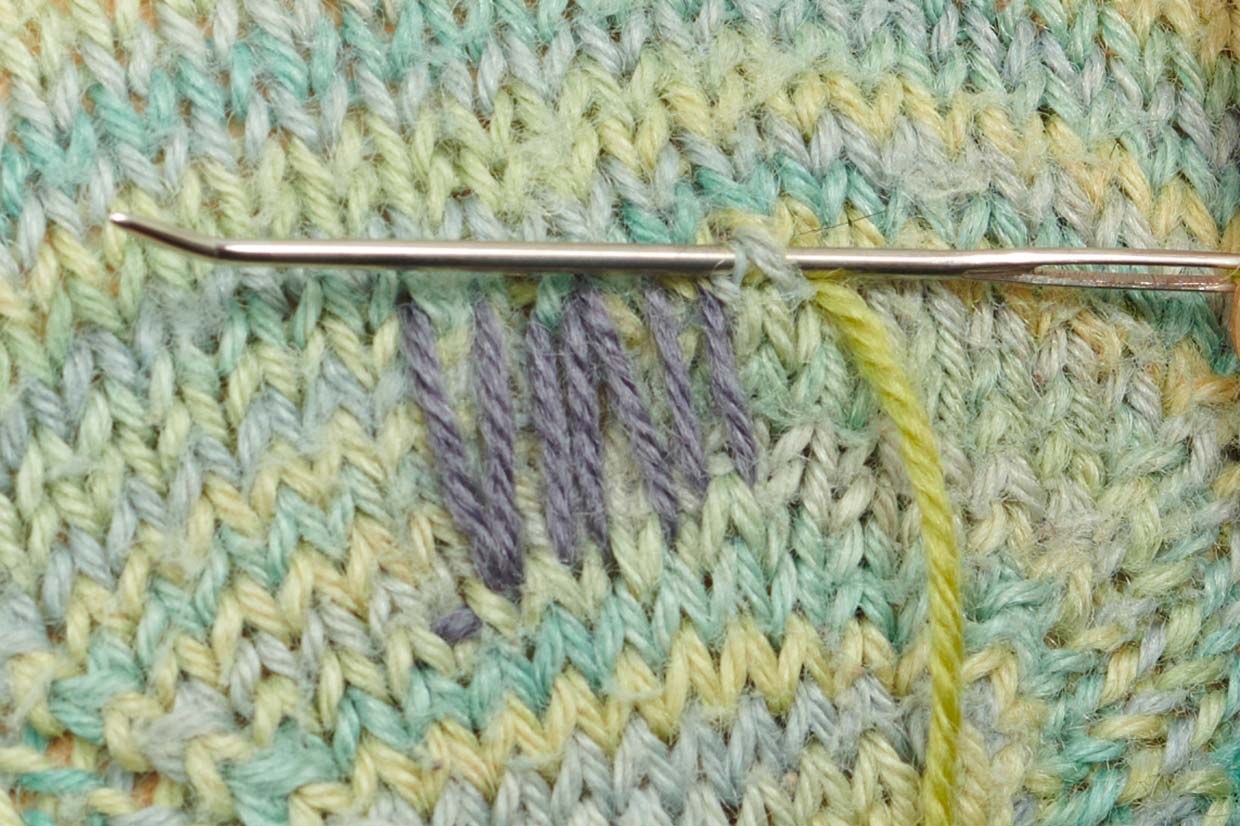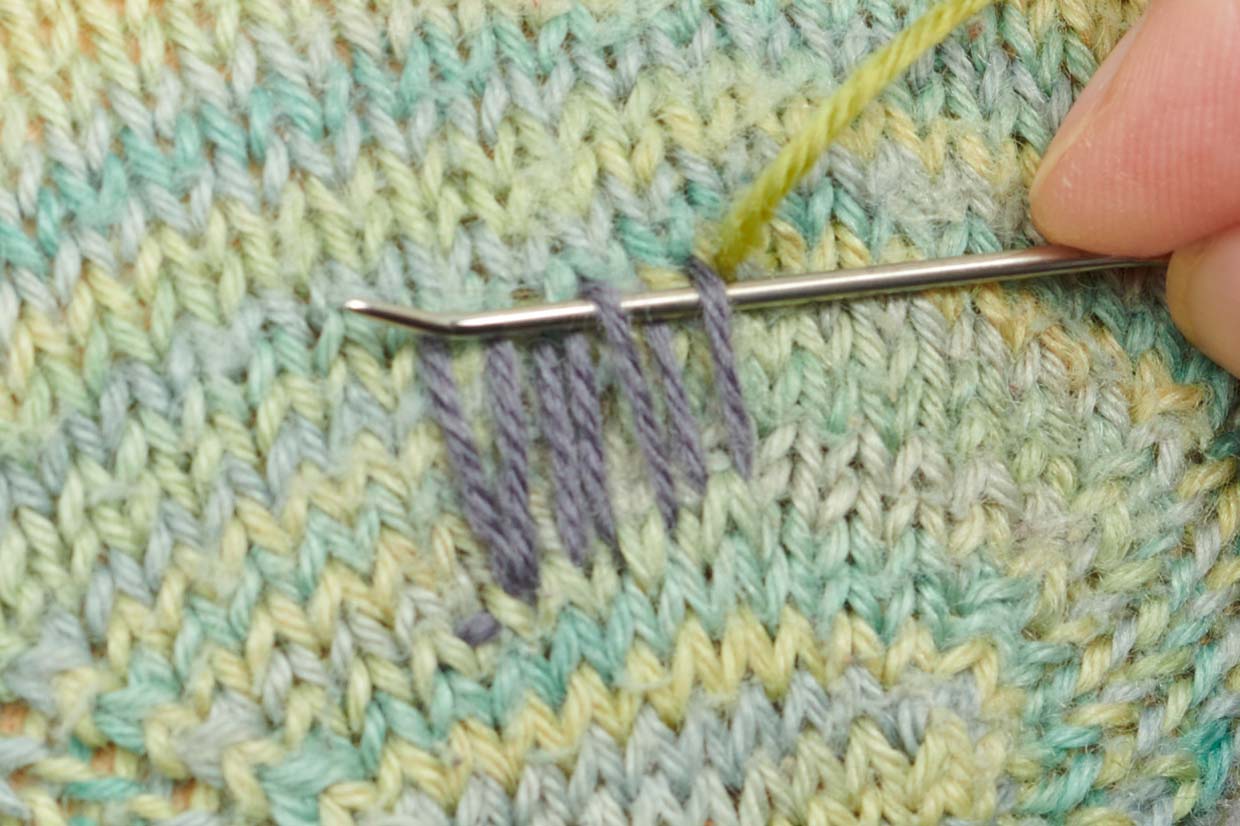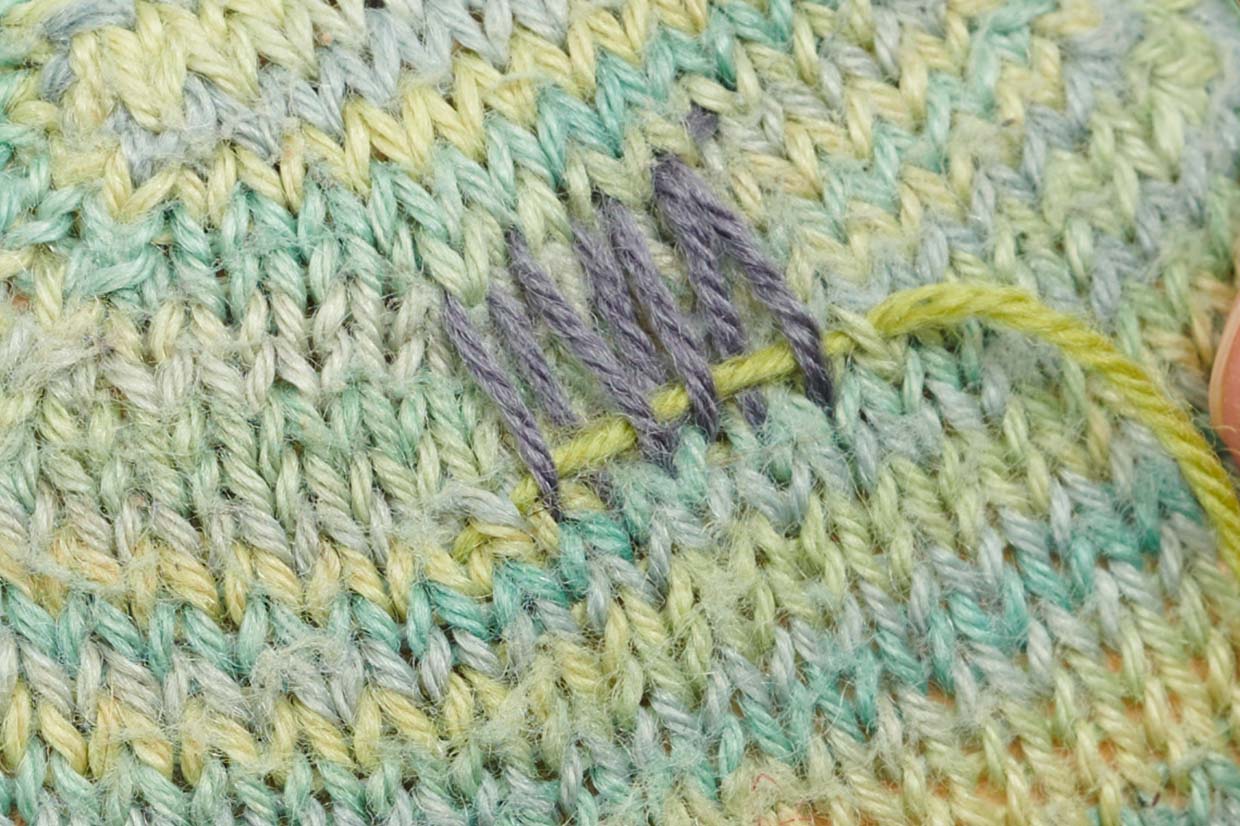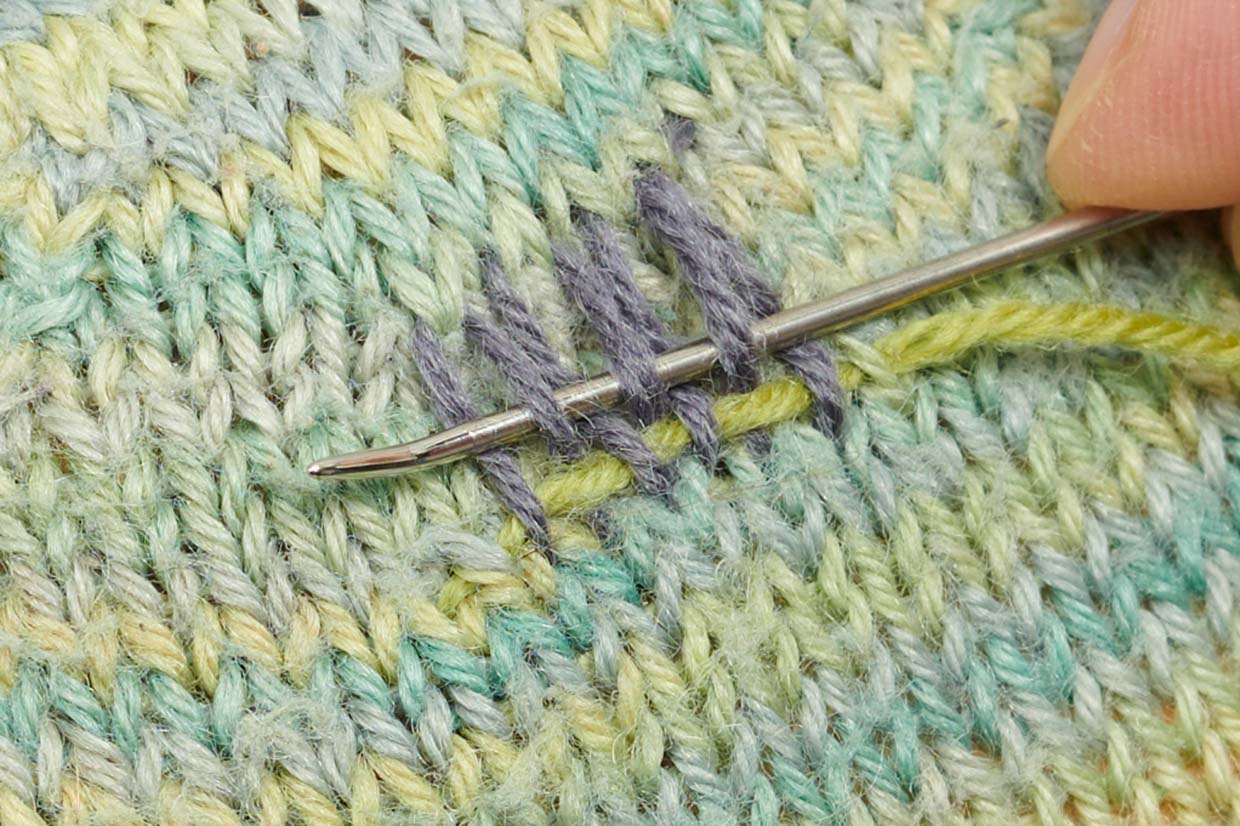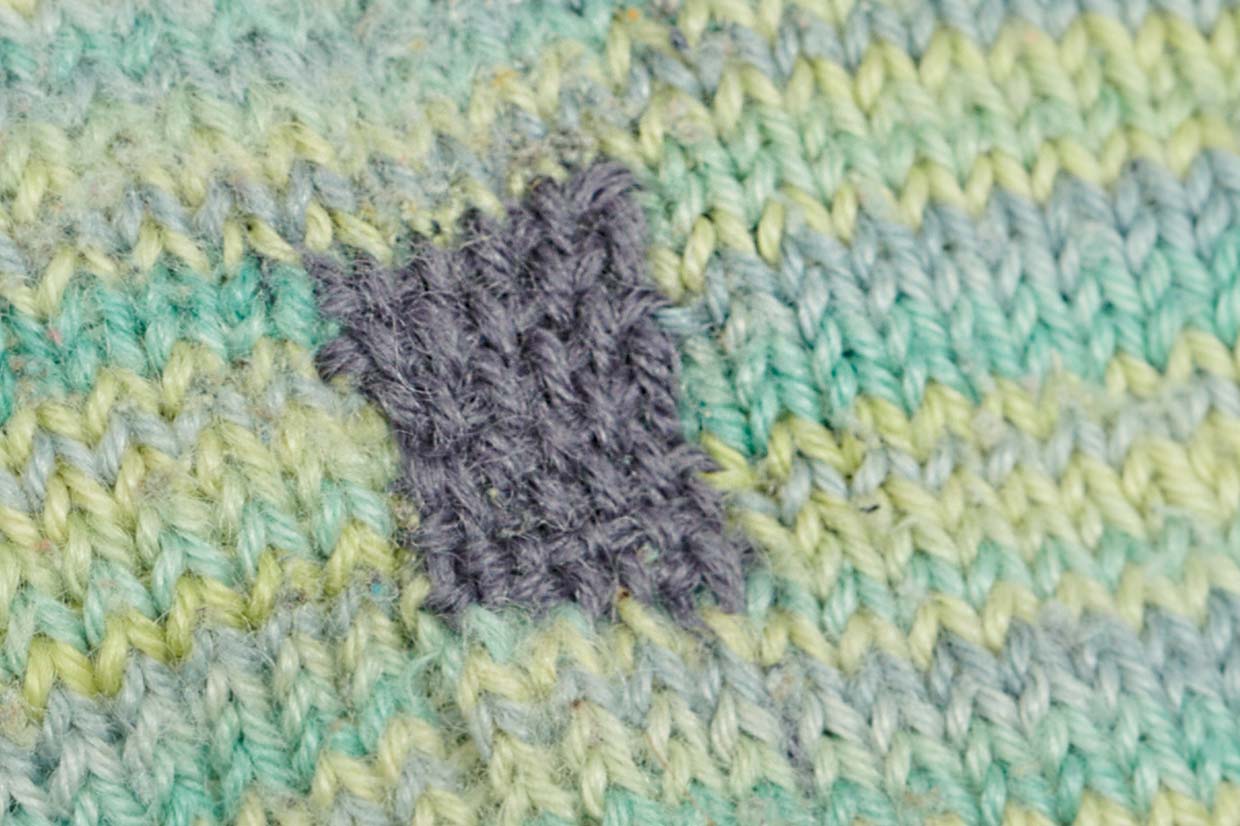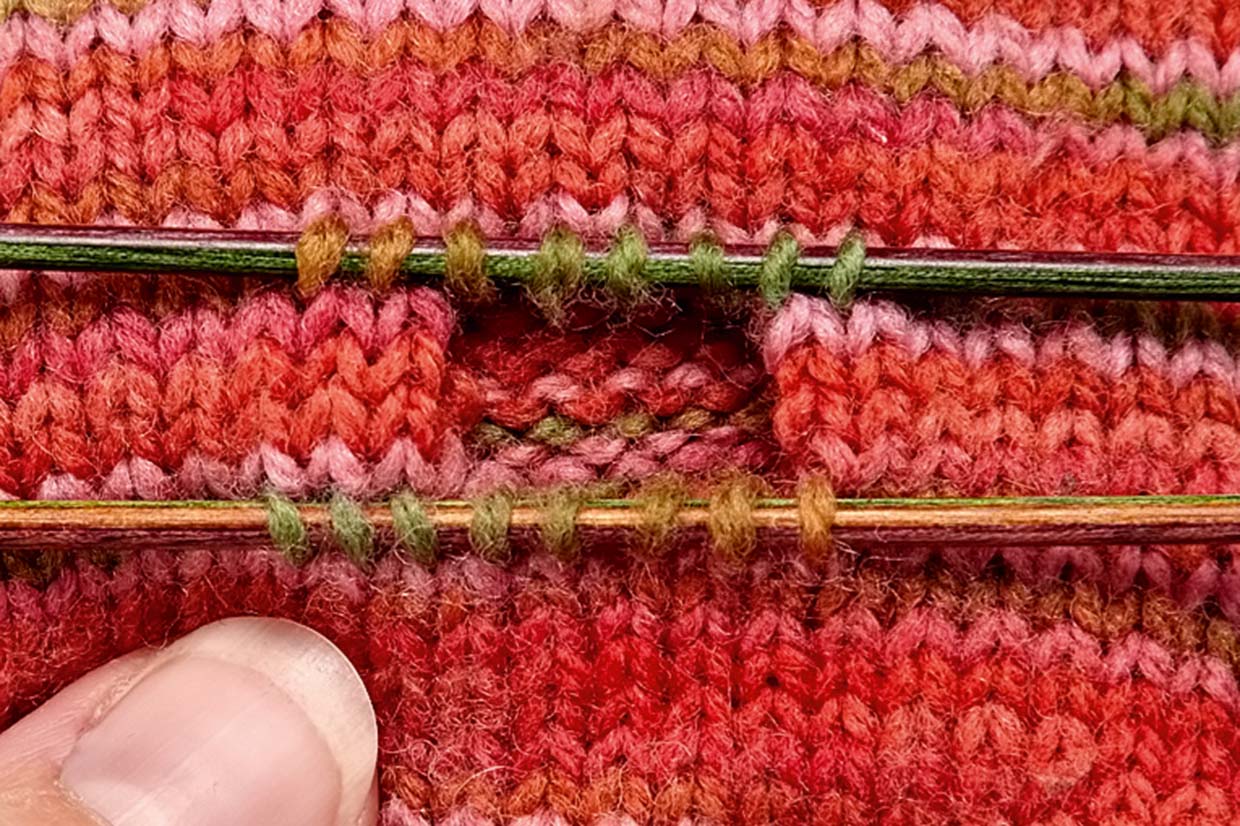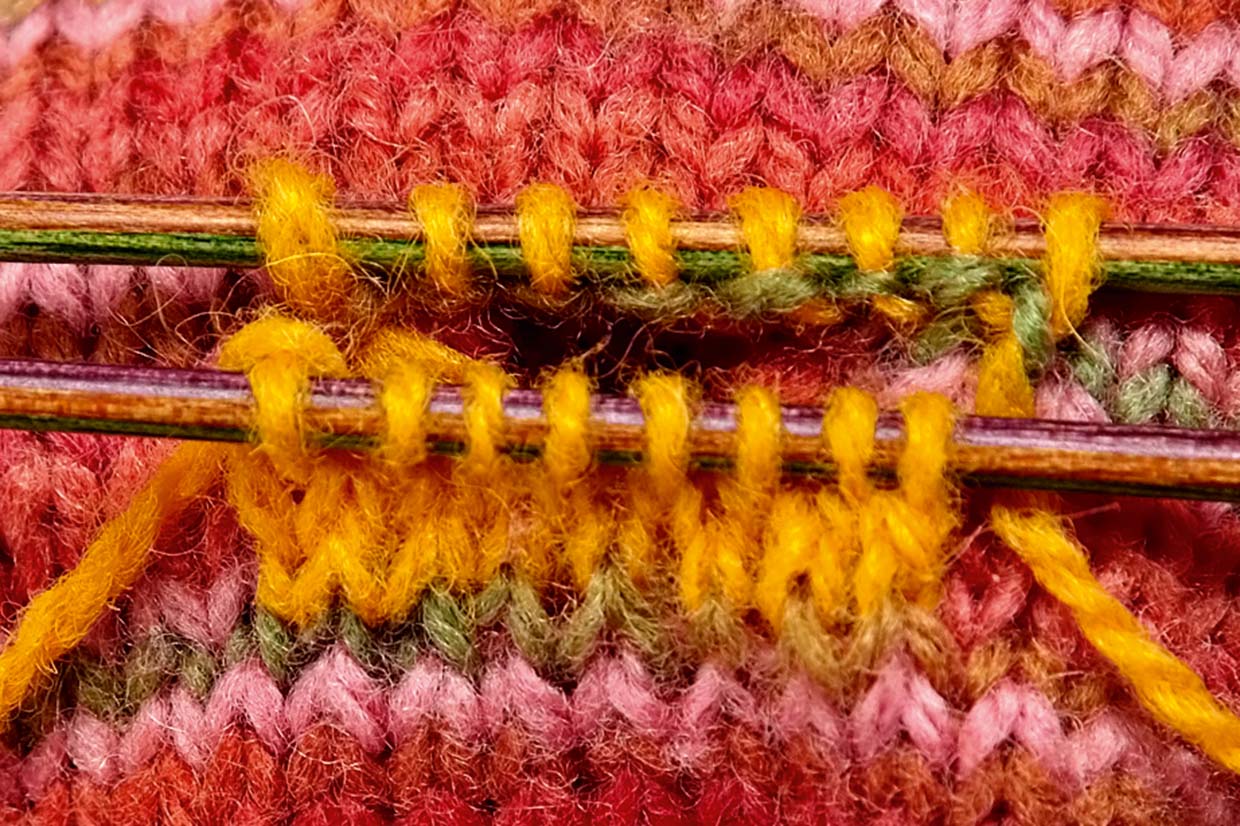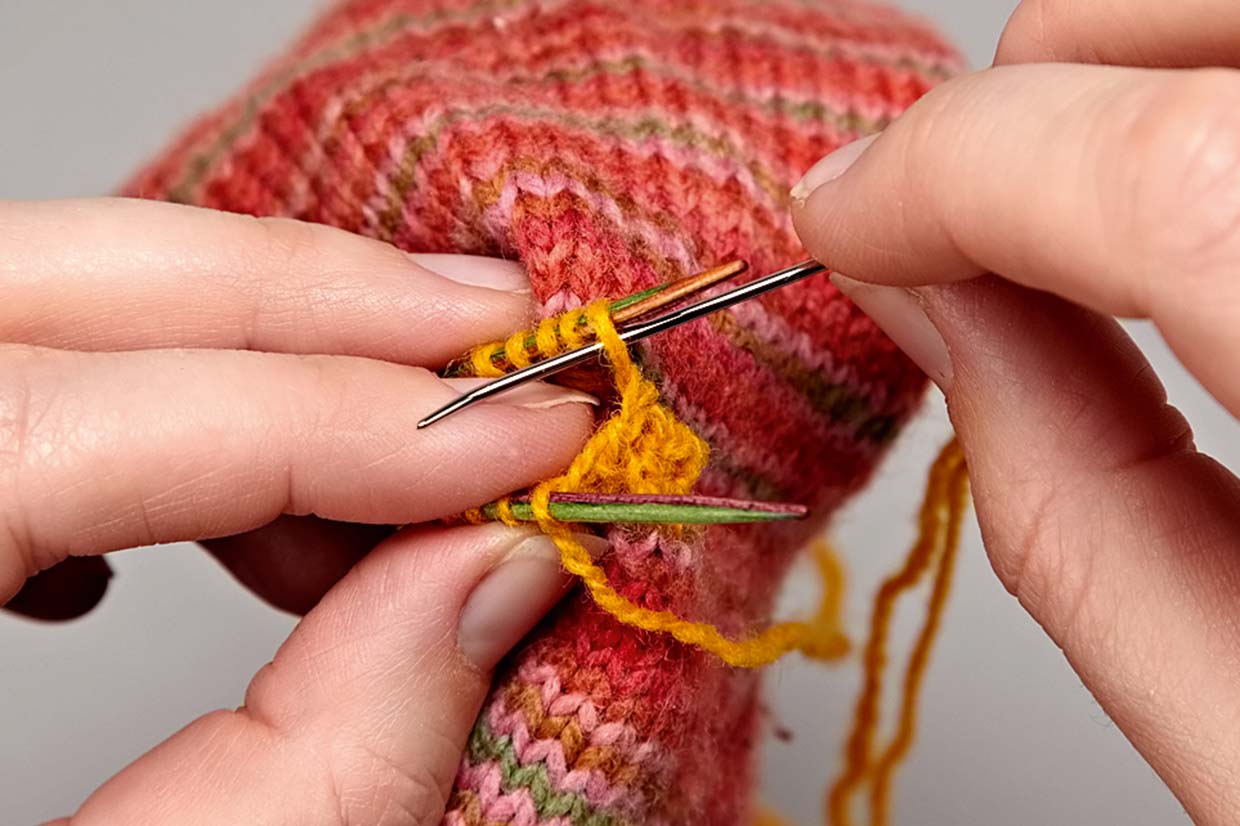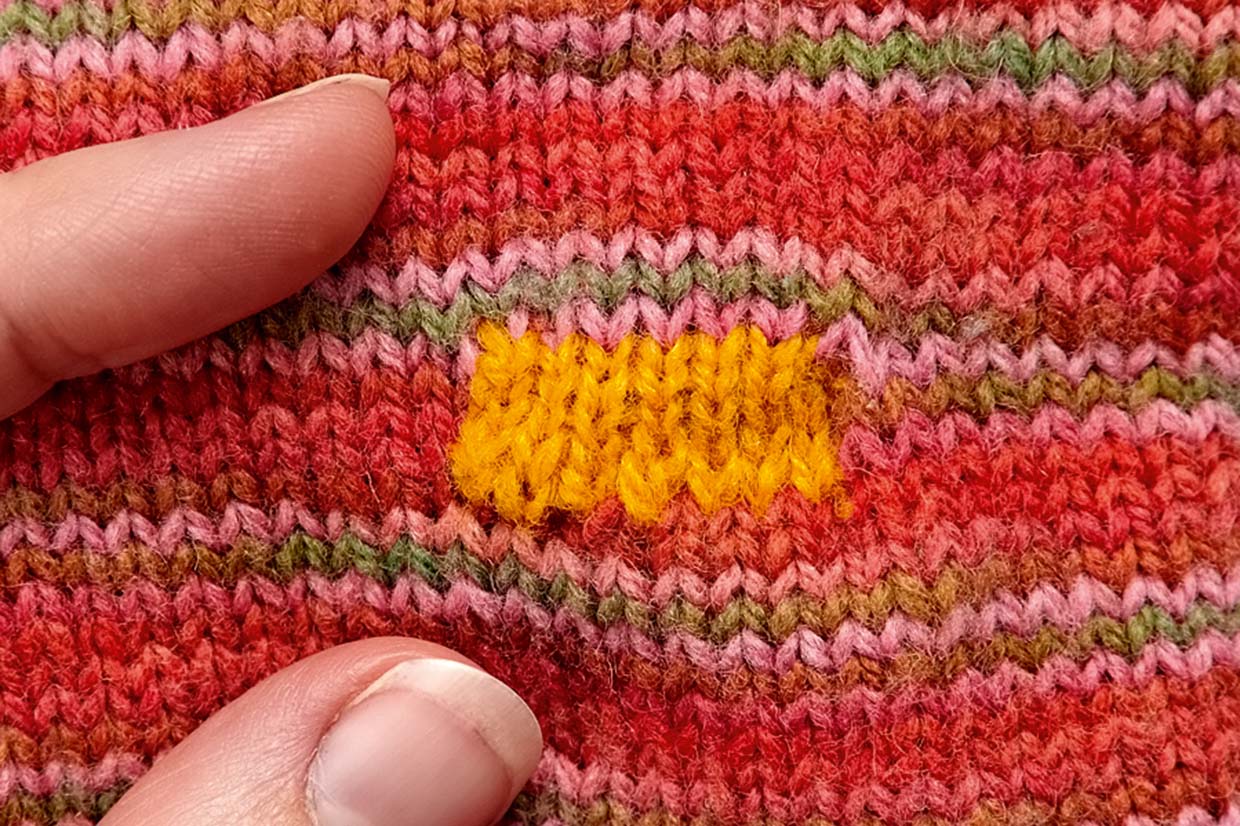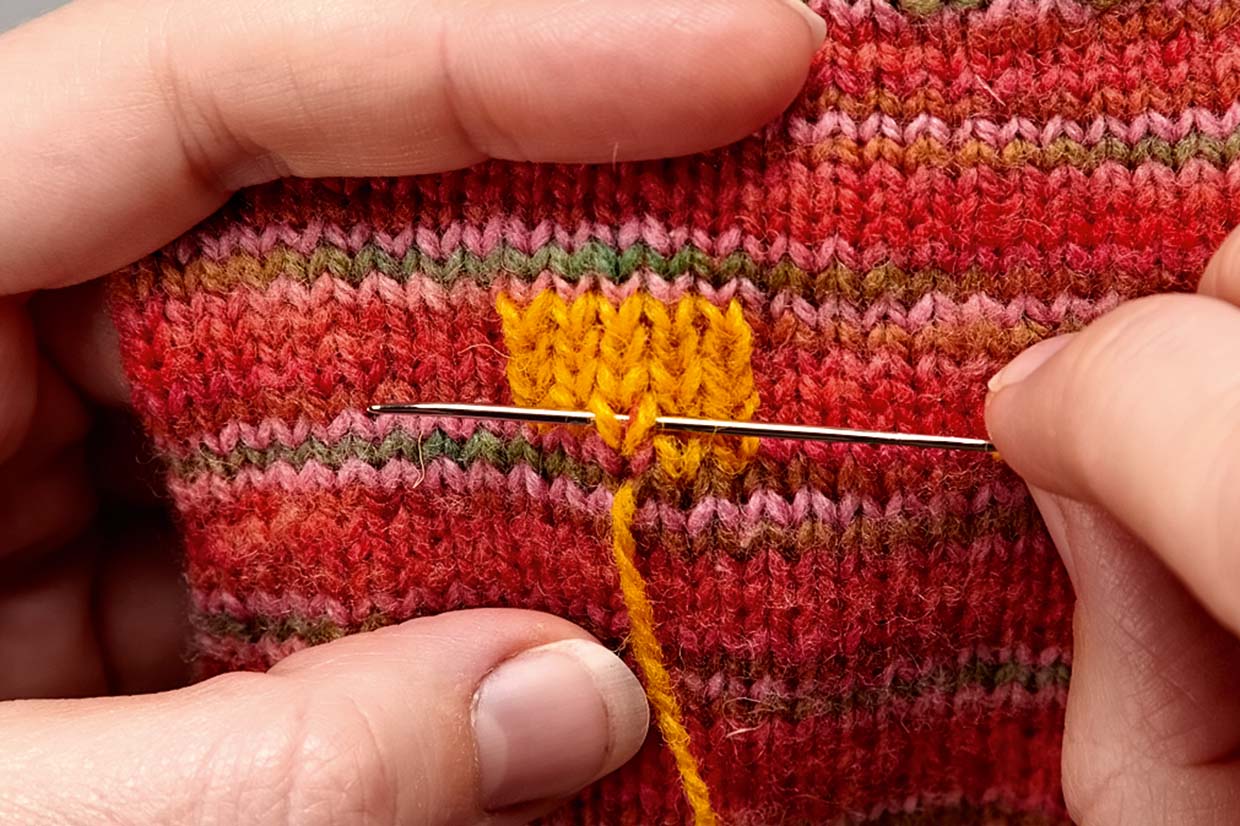It’s so heartbreaking when the worst happens, and a hole appears in your favourite pair of hand-knitted socks, or moths chew through a sweater sleeve. Especially when you’ve spent so many hours knitting them yourself!
All is not lost though, you can darn and continue wearing them. Read on to find out more about the lost art of darning socks. We have three techniques for you to try below.
- Darning socks with a woven darn
- Darning socks with a knitted-on patch
- Darning socks with Swiss darning
Top tips for darning socks
- My favourite way to darn is with the woven darn technique, which can be used to cover and stabilise any holes in your knitwear. It’s similar to weaving techniques for woven fabric, with vertical warp threads woven through with horizontal weft threads.
- Although the woven darn can be used on wide holes as well as smaller ones, it’s always best to catch holes before they get too big – check your socks regularly for signs of wear or thinning areas of fabric.
- While you could darn your socks with any needle and thread, having the right tools will give you much better results. Use a long darning needle, a thread similar to the original yarn, and a darning egg.
- Darning is a relatively simple technique to work, but don’t worry if your darn doesn’t look perfect when finished, as the fibres will begin to felt together as you wear the item, and start to look neater and tighter. Even a messy-looking darn will mean your sock is wearable again, and won’t need to be thrown away – which is always a good thing!
Tools for darning socks
To darn your socks successfully you need the right tools. You might already have some of these tools in your knitting bag, but if you don't we recommend where to find them below.
Darning thread for socks
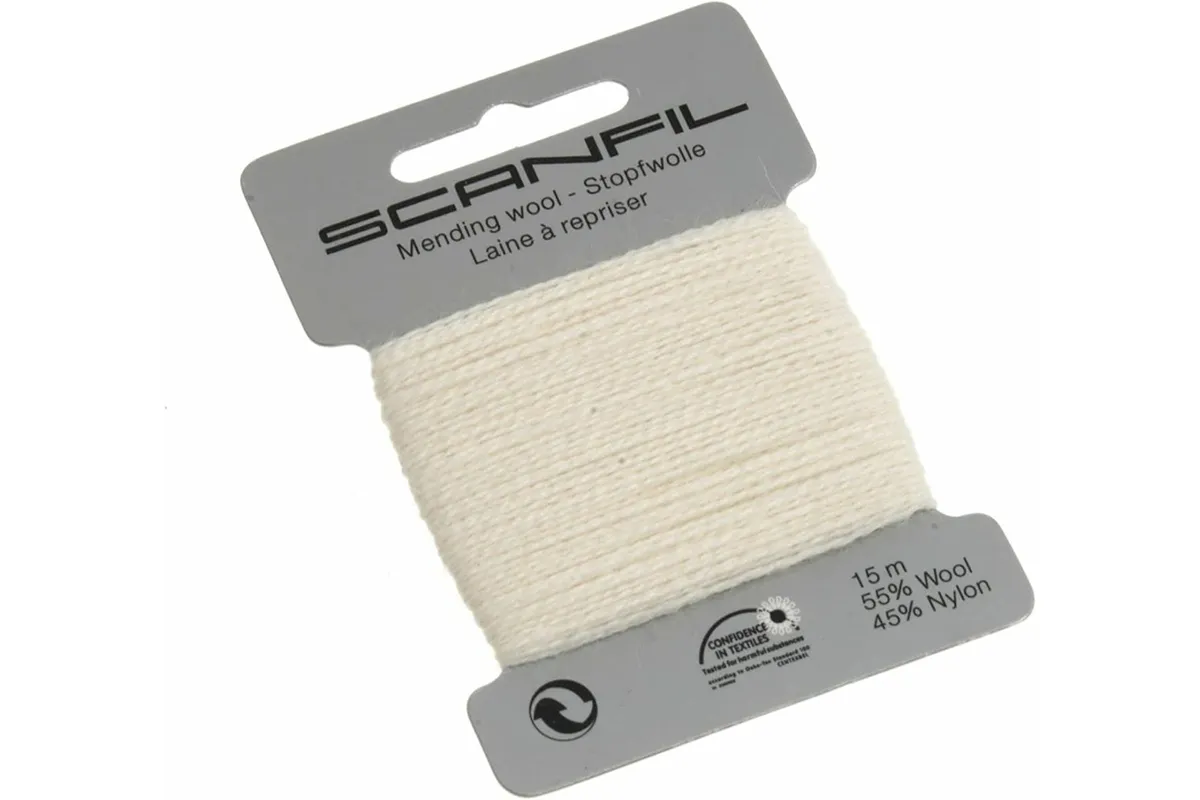
When darning hand-knitted socks, it’s a good idea to use a similar yarn to the one you knitted the sock with. Either use the same yarn if you have some left over, or a yarn in a similar colour – or be inspired by the trend for visible mending, and use highly contrasting colours to make a design feature out of your darn. You can also use cotton embroidery thread (floss).
SQUIRREL_13090871
Darning egg for socks
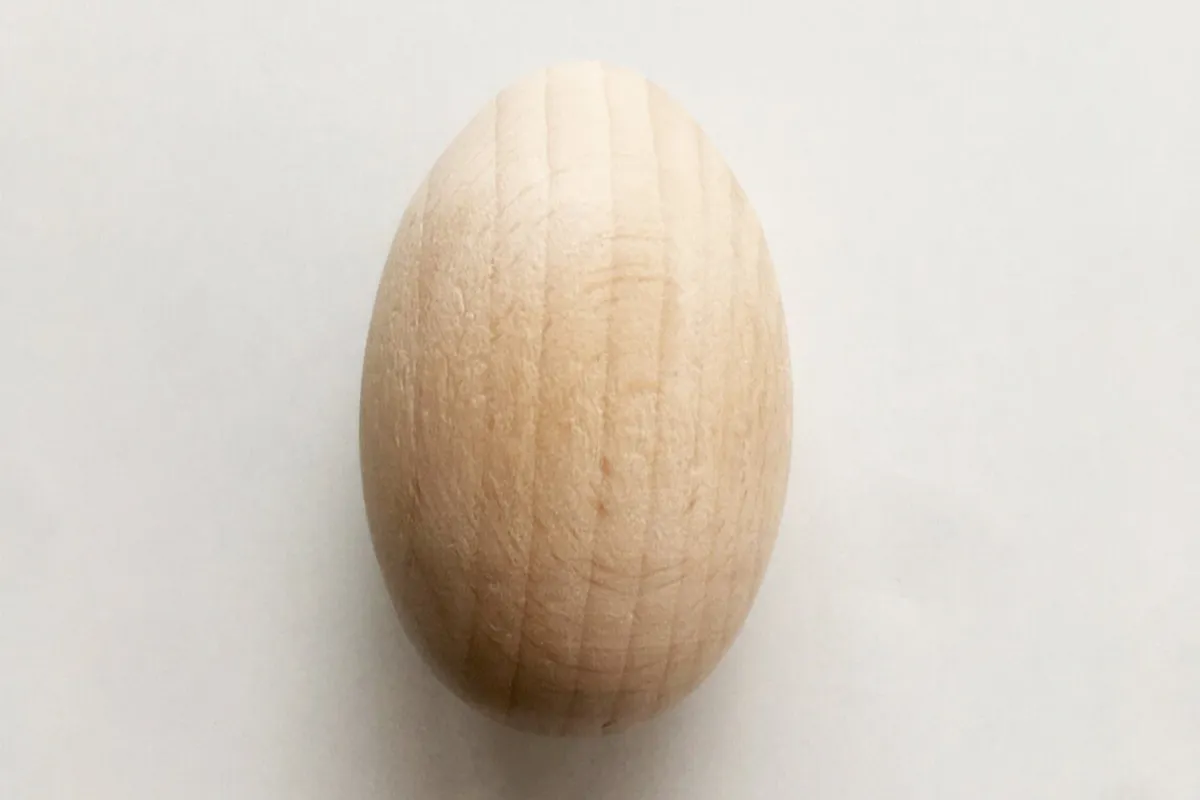
Before you start darning, you’ll need to stretch out the fabric to create tension; this makes it easier to see the area which needs repair, and also which stitches are thinning and at risk of turning into a hole.
The traditional tools for this are darning mushrooms or eggs, typically made from wood. These are available to buy new, or you can pick up a second-hand tool from online auction sites.
Alternatively, you can use another smooth, rounded object of a similar size, such as a ladle, a tennis ball, a pestle or even a hard-boiled egg!
You’ll also need a darning needle or a tapestry needle with a large eye and a bluntish end.
SQUIRREL_13105274
Darning needle for socks
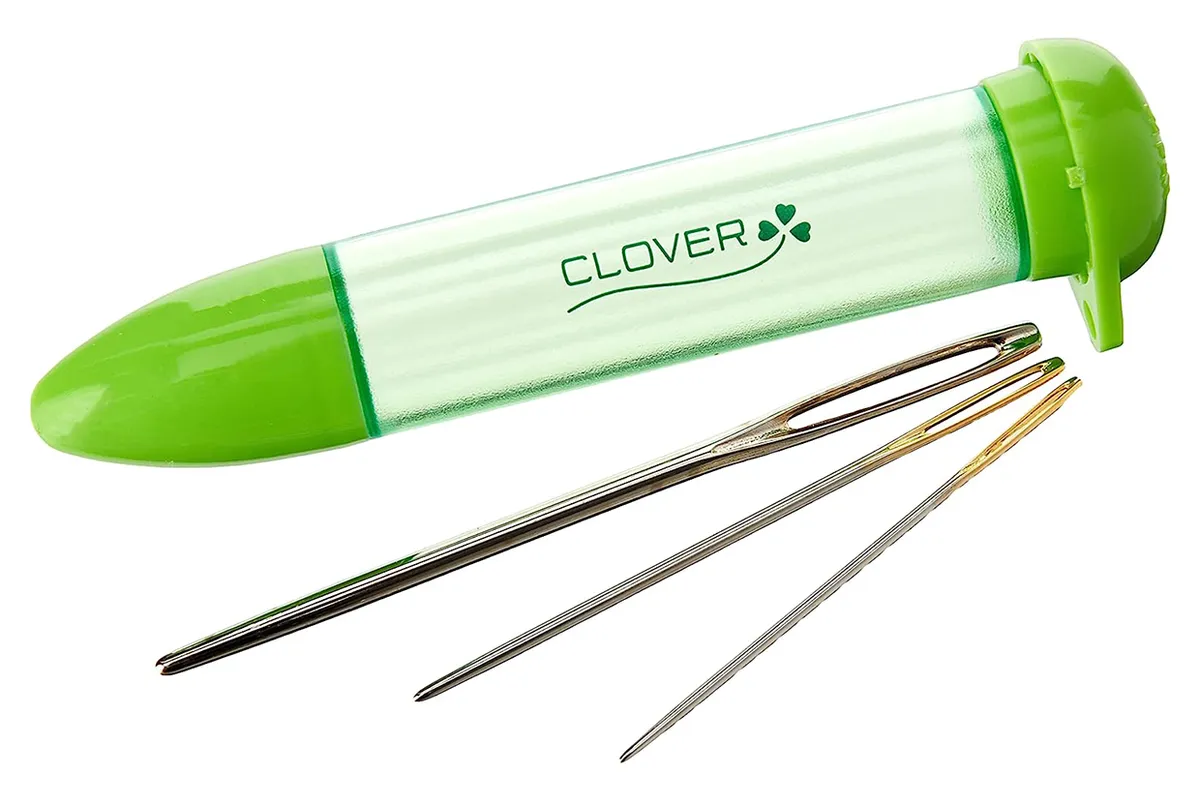
Darning needles tend to be longer and have larger eyes than regular sewing needles, so they're ideal when you're working with wool. You might also find curved rather than straight needles easier to work with.
SQUIRREL_13105268
Knit the perfect socks for your feet
If you're looking to start your sock knitting journey, or are keen to find a pair that fit just right, you'll want to read our guide to sock knitting patterns.
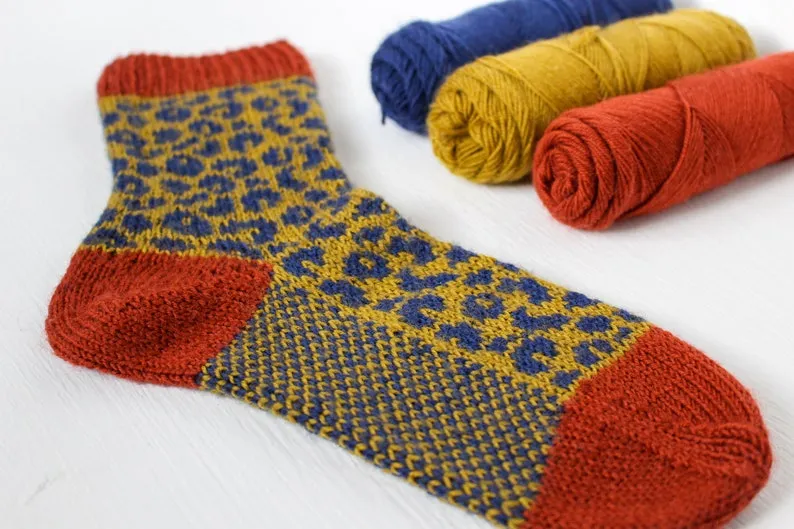
How to darn a sock
First consider whether you want to work the darn on the outside or inside of your item. For socks and other items which are worn next to the skin, it’s usual to darn on the right side of the fabric. For sweaters, you might prefer to darn on the wrong side, so that on the outside you’ll only see a small woven patch, which will integrate better with the fabric when washed and worn.
Next, cut a decent length of yarn or thread to sew with, which will be long enough to complete the darn but still be manageable to work with – a couple of arm’s lengths should be plenty. Thread the yarn or thread onto your darning needle.
Insert your darning egg or mushroom into the sock so that the area to be darned sits centrally, and the fabric is stretched out. If you’re using a darning mushroom, you may choose to secure the sock in place by wrapping an elastic hairband around the stem of the mushroom.
To watch a video guide to darning socks using a woven technique, take a look at this sock repair tutorial from Our Gabled Home.
